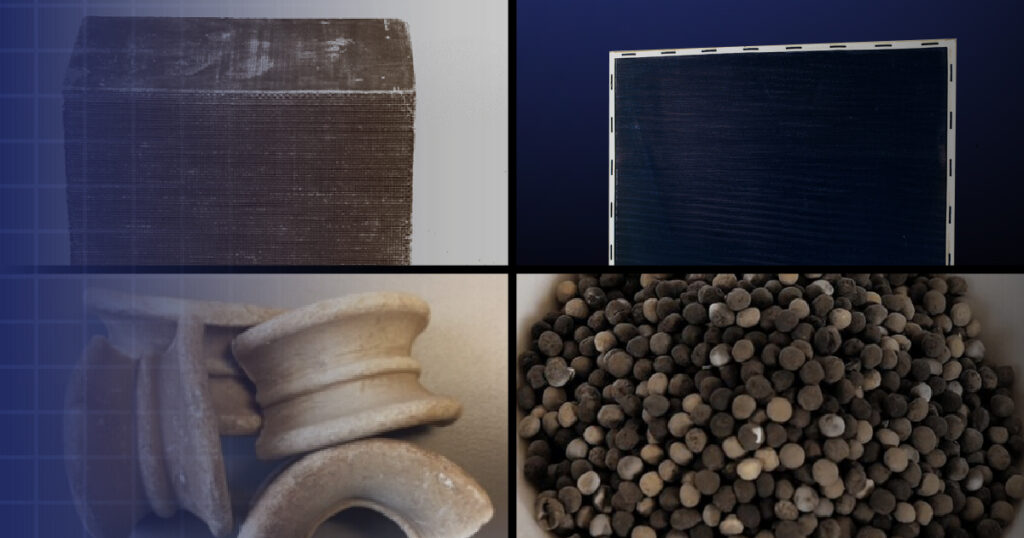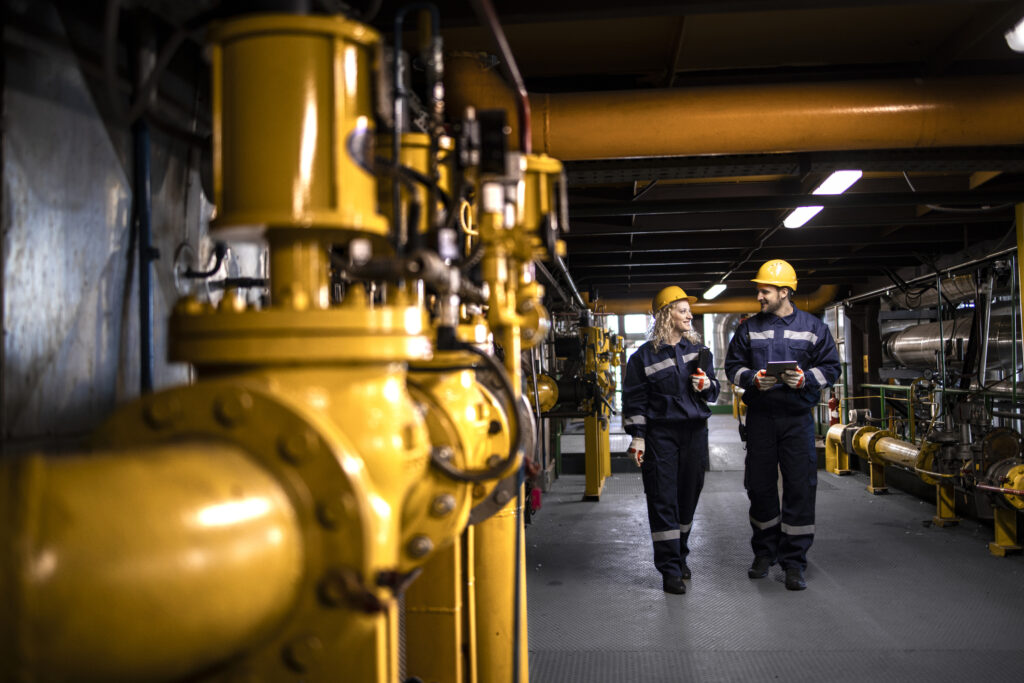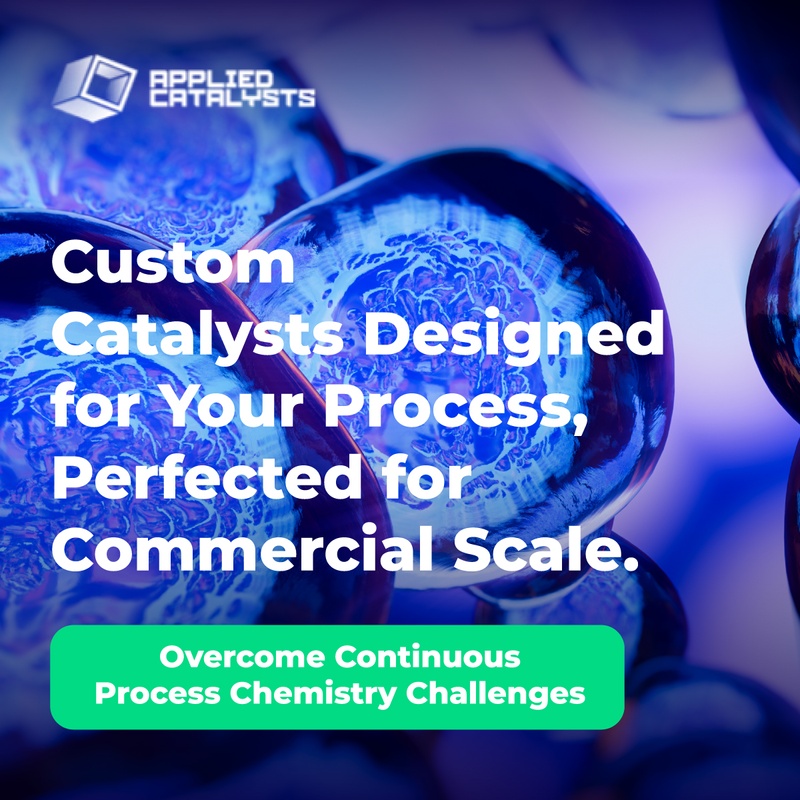In today’s industrial landscape, managing environmental impact is not just a regulatory compliance issue but a critical element of sustainable operational practices. Among the various pollutants, Volatile Organic Compounds (VOCs) pose significant challenges due to their high reactivity and potential to form ground-level ozone and particulate matter, which are harmful to human health and the environment.
Therefore, controlling VOC emissions is a priority for industries aiming to reduce their environmental footprint and enhance air quality.
VOC oxidation catalysts play a pivotal role in this endeavor.
These catalysts are the unsung heroes, facilitating the conversion of VOCs into harmless substances like carbon dioxide and water through oxidation processes. They effectively diminish the release of harmful pollutants into the atmosphere, enhancing air quality.
This blog explores the mechanics behind VOC oxidation catalysts, highlighting their importance in modern industrial air pollution control systems. It underscores how they are integral to maintaining environmental compliance and ensuring operational efficiency, making them a responsibility we all share.
Read on to learn how emission control catalysts are helping shape a cleaner, more sustainable industrial future.
What are VOC Oxidation Catalysts?

Volatile Organic Compounds (VOCs) oxidation catalysts are specialized materials designed to facilitate the conversion of VOCs into less harmful substances through the process of catalytic oxidation. This transformation is crucial for industries seeking to mitigate air pollution and adhere to environmental regulations.
Their Function in Air Pollution Emission Control
VOC oxidation catalysts serve a critical role in emission control systems by accelerating the oxidation of VOCs into carbon dioxide and water—harmless by-products that pose significantly less risk to environmental and human health.
These catalysts allow the oxidation process to occur at lower temperatures than would be required in a non-catalyzed reaction, such as thermal oxidation, enhancing energy efficiency and reducing operational costs.
Chemical Principles Behind VOC Oxidation
The chemical principle underlying the function of VOC oxidation catalysts is the catalysis of oxidation reactions. These catalysts provide a surface where the VOC molecules interact with oxygen molecules in the air.
Here’s a simplified step-by-step explanation of the process:
- Adsorption: VOC molecules are adsorbed onto the catalyst’s surface, where they are temporarily held by physical or chemical interactions.
- Reaction: On the catalyst’s surface, oxygen molecules also adsorb and react with the adsorbed VOC molecules. The catalyst facilitates this reaction, lowering the activation energy required for it to proceed.
- Desorption: The reaction products, primarily carbon dioxide and water, are then released from the catalyst’s surface into the surrounding environment.
This highly efficient catalytic process can handle both high volumes of VOCs as well as low concentrations of VOC’s, making it indispensable in applications, particularly where there is a high total flow rate of emissions, and a low amount of VOC’s. The catalysts are typically made from metals such as platinum, palladium, and rhodium, known for their high reactivity, wide range of temperature operation and durability under harsh operating conditions.
Types of VOC Oxidation Systems

Among the technologies employed, recuperative and regenerative oxidation systems stand out for their efficiency and environmental benefits.
Recuperative Oxidation Systems – Thermal vs Catalytic
Recuperative oxidation systems utilize a heat exchanger (tube & shell, plate & fin) combined with an oxidation/catalyst chamber. In these systems, polluted air containing VOCs is heated as it passes through a heat exchanger before entering the oxidation/reaction chamber. In a thermal process, the temperatures required to fully oxidize VOC’s typically range from 800°C to 950°C, while VOCs react at much lower temperatures in the presence of a catalyst, fully oxidizing most VOC’s between 300 – 450°C.
Design & Operational Principles
The key component, the heat exchanger, recovers heat from the cleaned exhaust gases to preheat incoming polluted air, reducing the overall energy consumption required to maintain the oxidation process. This continuous transfer of heat makes recuperative systems particularly energy efficient.
Advantages & Applications of Recuperative Oxidation Systems
- Energy Efficiency: By recycling heat, these systems significantly reduce energy costs associated with heating the incoming air.
- Cost-Effectiveness: Lower operational costs due to less fuel consumption.
- Versatility: It is suitable for various industrial applications, including chemical manufacturing, painting, and coating operations with moderate VOC loads.
Regenerative Oxidation (RCO) Systems
Regenerative Thermal Oxidation (RCO) systems improve the energy efficiency of traditional systems by using a series of heat exchange beds containing ceramic media that alternately store and release heat. In RCO systems, exhaust air cycles through these ceramic beds, capturing and utilizing the heat from oxidation to preheat the incoming polluted air.
Energy Efficiency & Effectiveness
RCO systems are highly efficient, often achieving up to 95% heat recovery efficiencies. This capability allows them to operate at lower temperatures than other air pollution emissions control systems, significantly reducing supplemental fuel use and associated costs.
Benefits Over Traditional Industrial Air Pollution Control Methods
- High VOC Destruction Efficiency: Capable of achieving up to 99% destruction rate efficiency for VOCs.
- Lower Operating Costs: The high level of heat recovery translates into markedly lower operating costs.
- Scalability and Flexibility: Ideal for industries with high-volume air streams and variable VOC concentrations, such as wood panelboard, wood pellets, automotive manufacturing, pharmaceuticals, and large-scale chemical processing.
Comparison with Recuperative Systems
While both systems are designed for VOC emission reduction, RCO systems generally offer better energy efficiency and operational cost savings, especially in applications with large volumes and high thermal loads, and in plants that operate 24 hours per day.
However, recuperative systems might still be preferred in smaller-scale operations that do not operate 24 hours per day or where initial capital investment needs to be minimized.
Advancements in VOC Oxidation Catalyst Technology

The emission control catalyst market has seen significant advancements in recent years, driven by the need for more efficient, durable, and cost-effective industrial air pollution control.
These innovations are crucial for meeting stringent environmental standards while maintaining operational viability.
High-Performance Materials
- Development of Nanostructured Catalysts: Recent research has focused on developing nanostructured catalysts offering a dramatically increased surface area. This structure enhances the catalyst’s activity and selectivity for VOC oxidation.
- Use of Rare Earth Metals: The integration of rare earth metals into traditional catalyst compositions such as platinum or palladium has been shown to improve both the efficiency and longevity of catalysts under harsh operating conditions.
Catalyst Coating Innovations
- Durable Coatings: Advances in catalyst coatings have significantly enhanced the durability of oxidation catalysts. These coatings protect the catalyst from thermal degradation and chemical poisoning, extending its operational life.
- Smart Coatings: Some coatings are designed to change their properties in response to environmental changes, such as temperature shifts, to maintain optimal catalytic activity without additional energy input.
Modular Catalyst Designs
- Customizable Modules: The development of modular catalyst systems allows for tailored configurations that can be easily scaled up or modified according to specific operational needs. This adaptability makes them ideal for a wide range of industrial applications.
Innovations Improving Efficiency, Durability, and Cost-Effectiveness
- Enhanced Catalytic Efficiency: Innovations in catalyst composition and structure have led to catalysts that can achieve higher VOC destruction rates at lower temperatures, thereby reducing the energy consumption of the oxidation process.
- Increased Catalyst Life: The latest catalysts have longer operational life spans due to the use of more robust materials and protective coatings. This reduces the frequency of catalyst replacement, lowering long-term operational costs.
- Reduced Operational Costs: Introducing energy-efficient designs and materials helps decrease the operational costs associated with VOC oxidation systems. For example, improved heat retention capabilities minimize the need for supplemental heating, reducing fuel consumption.
- Sustainability: Many modern catalysts are designed with sustainability in mind, using more abundant materials and less harmful to the environment. Additionally, the increased efficiency of these catalysts contributes to lower emissions, aligning with global sustainability goals.
Choosing the Right VOC Oxidation Catalyst

Selecting the appropriate VOC oxidation catalyst is a critical decision that can significantly influence industrial air pollution control equipment’s efficiency, compliance, and cost-effectiveness.
Various factors must be considered to ensure that the chosen catalyst meets the specific requirements of different industrial applications.
Here’s a guide to help navigate the selection process effectively.
| Criteria | Factor | Details |
| Catalyst Composition | Active Metals | Metals like platinum, palladium, or combinations thereof impact effectiveness and durability. Specific metals may more effectively target certain VOC types. |
| Support Materials | Materials such as alumina, silica, or zeolites support the active metals and influence the catalyst’s surface area, thermal stability, and poison resistance. | |
| Operational Conditions | Temperature Tolerance | Catalysts need to operate efficiently within the specific temperature range of the industrial process. |
| Chemical Resistance | Resistance to deactivation by chemicals or impurities in exhaust streams is crucial. | |
| Pressure Drop Considerations | Choosing a catalyst that minimizes pressure drop is important to maintain efficiency and reduce energy consumption. | |
| Expected VOC Load | Load Variability | In industries with fluctuating VOC loads, selecting a catalyst that maintains high activity across these variations is vital. |
| Type of VOCs | The chemical nature of VOCs (aromatic, aliphatic, halogenated, etc.) influences catalyst choice, with specific catalysts optimized for particular VOC reactivities and conversion rates. |
Considerations for Different Industrial Applications
- Manufacturing and Chemical Processing: Industries with heavy VOC emissions require robust catalysts that can handle high throughput and resist poisoning from diverse chemical compounds.
- Automotive and Coating Applications: These sectors might need catalysts optimized for lower temperatures and rapid start-up times to accommodate dynamic operational conditions.
- Pharmaceuticals and Specialty Chemicals: These industries often deal with complex VOC mixtures requiring high selectivity and purity in emission control, necessitating highly specialized catalysts.
Implementation Challenges & Solutions by Industry

Implementing VOC oxidation catalysts in industrial settings presents several challenges that can vary significantly by industry or specific use case.
Addressing these challenges requires tailored solutions that consider each industry’s unique environmental, operational, and regulatory demands.
Below, we explore common challenges across different sectors.
Manufacturing
- Challenge: High VOC variability due to different manufacturing processes.
- Solution: Implement modular catalyst systems that can be easily adapted or scaled according to the changing VOC types and concentrations.
- Preventive Measure: Regular monitoring and adaptive control systems to adjust operations in real-time based on VOC emissions data.
Chemical Processing
- Challenge: Catalyst poisoning from impurities in raw materials.
- Solution: Pre-treatment of raw materials to remove impurities before they reach the oxidation process.
- Preventive Measure: Incorporation of poison-resistant materials in catalyst design to enhance longevity. Using catalyst guard beds that act as a scavenger or sacrificial bed, lengthening the life of the more expensive precious metal catalyst.
Petrochemicals
- Challenge: Dealing with the large-scale emissions and the presence of multiple types of VOCs.
- Solution: Use of regenerative thermal oxidizer (RTO) systems potentially equipped with high-performance VOC oxidation catalysts to handle diverse VOC loads.
- Preventive Measure: Strategic placement of VOC monitoring systems to promptly identify and promptly address emissions hotspots.
Global Leaders in Emission Control Catalyst Manufacturing

With the right VOC oxidation catalysts and systems, industries can significantly reduce harmful emissions, enhancing environmental quality and operational efficiency. Applied Catalysts stands at the forefront of this technology, providing innovative solutions tailored to various industries’ unique challenges.
Our expertise spans manufacturing, chemical processing, automotive, and petrochemical sectors and more, ensuring that each solution addresses specific VOC control needs and integrates seamlessly with existing operational frameworks.
From advanced catalyst materials to comprehensive system designs, we focus on delivering performance, durability, and cost-effectiveness to the emission control catalyst industry.
Are you ready to elevate your emission control strategies? Our team of experts is ready to assist you in selecting, implementing, and maintaining the optimal VOC oxidation solution for your needs.
Recent Posts
Cutting Costs and Emissions: A Dual Approach for Spark Ignition Engine Manufacturers
Balancing emission reduction with cost management is crucial in spark ignition engine manufacturing. As global environmental regulations become increasingly stringent, manufacturers are compelled to adopt innovative solutions that meet air…
Read MoreCatalyst Testing Tips: Determining Activity in VOC Catalysts
VOC catalysts are pivotal in reducing harmful emissions released during industrial processes, directly influencing air quality and compliance with stringent environmental regulations. However, the effectiveness of these catalysts hinges not…
Read MoreHow to Prevent Catalyst Poisoning at the Industrial Scale
Catalyst poisoning remains one of the most significant challenges in industrial catalysis, potentially crippling the efficiency of processes that are vital to manufacturing sectors worldwide. This phenomenon occurs when chemical…
Read More


